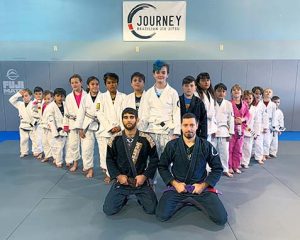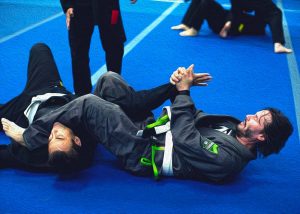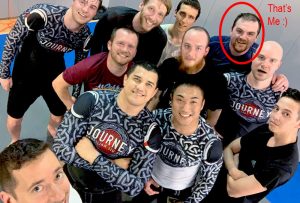[et_pb_section fb_built=”1″ _builder_version=”3.0.47″][et_pb_row _builder_version=”3.0.48″ background_size=”initial” background_position=”top_left” background_repeat=”repeat”][et_pb_column type=”4_4″ _builder_version=”3.0.47″ parallax=”off” parallax_method=”on”][et_pb_text _builder_version=”3.15″ background_size=”initial” background_position=”top_left” background_repeat=”repeat” text_font_size=”16px” header_font=”||||||||” custom_margin=”|||” custom_padding=”|||” text_font=”||||||||”]
Brazilian Jiu Jitsu can be traced back to its roots in Judo. Founded by Jigoro Kano in 1882, upon combining two traditional martial arts styles which Kano had learned and trained previously. What set Kano’s Judo apart from other styles was the focus on realistic attacks and defense.
While other traditional martial arts of that time were preoccupied with practicing “katas” (solo sequences of choreographed techniques), Kano also wanted to apply his techniques against resisting opponents to simulate the most realistic scenario. Judo quickly became the reigning martial art of the time, beating out all opponents that tried to challenge the style.
At the beginning of the 19th century, Judo’s superiority was challenged by a Japanese style of Jiu Jitsu called Fusen Ryu. Mataemon Tanabe, the headmaster of this style, publicly challenged students of Kano’s school and defeated all of them by submission on the ground. This brought Kano to request to have Tanabe teach his techniques at the Kodokan School. Judo evolved to incorporate more submissions and ground fighting.
One of the most promising young martial artists that came from this new school of Judo was Mitsuyo Maeda. Maeda, also known as Count Combat, was a great promoter of Judo and traveled all around the world to fight against different opponents from several different styles. He was able to have over 1,000 matches under his belt and retired without ever losing a single fight. Having the combination of both Judo and Jiu Jitsu techniques allowed Maeda to have a very effective realistic method of fighting.
Mitsuyo Maeda immigrated to Brazil and opened his own Jiu Jitsu academy, he began training students, one specifically, Carlos Gracie. Carlos trained with Maeda for several years in the 1920’s, and soon went on to open his own gym in 1925. Carlos’s Brother Helio Gracie continued to evolve Maeda’s Judo to focus more on ground fighting, especially fighting off one’s back. The two brothers put their new art to the test and began challenged fighters of all backgrounds to compete against them. This became renown as the “Gracie Challenge.”
Fast forward to the 1990’s, Helios skinny son, Royce Gracie had a run of dominating victories in the beginning of the Ultimate Fighting Championship – one of the first MMA promotions in the US. His brother Rickson was able to claim a similar bout of victories in Japan, many of the other Gracie brothers were successful around the United States in various MMA competitions. These victories made the effectiveness of jiu jitsu very hard to ignore.
The rise of Gracie Jiu Jitsu has had a huge impact on MMA around the world, almost all fighters train Jiu Jitsu to some extent while preparing for fights, and it has proven its effectiveness.
In general BJJ is arranged to allow physically smaller or weaker individuals with a capable set of skills to defend against stronger, and larger attackers. Various innovations made by the Gracie family and other contributors to Jiu Jitsu have made it one of the most effective styles of martial arts in the world.
[/et_pb_text][/et_pb_column][/et_pb_row][/et_pb_section]




